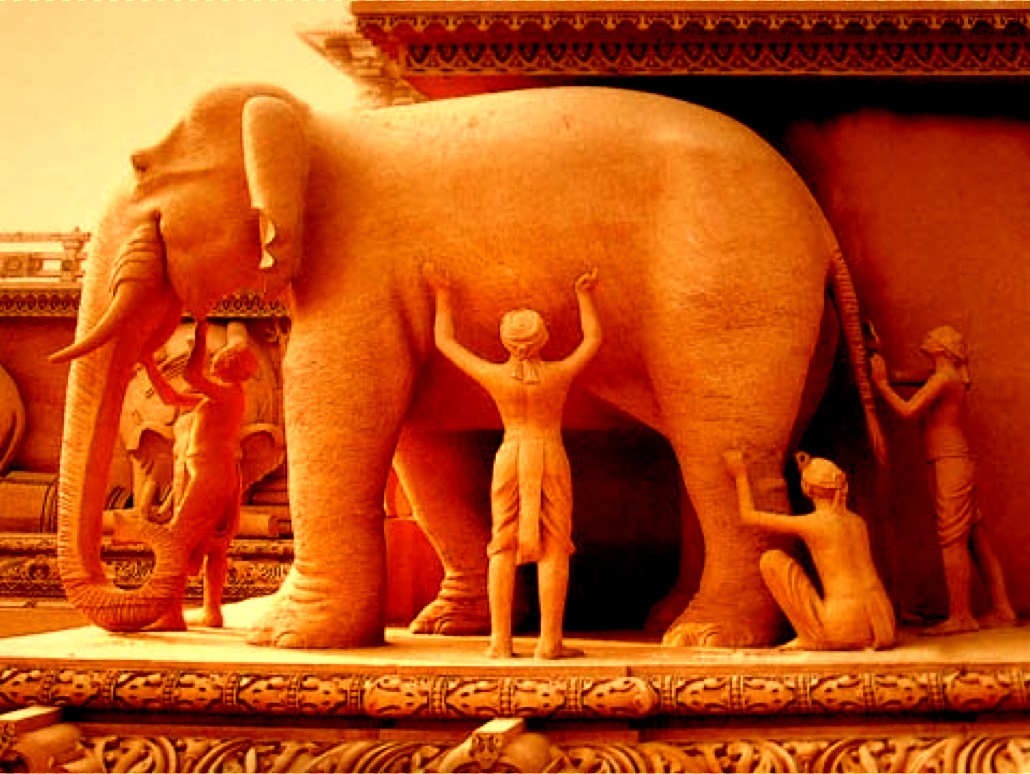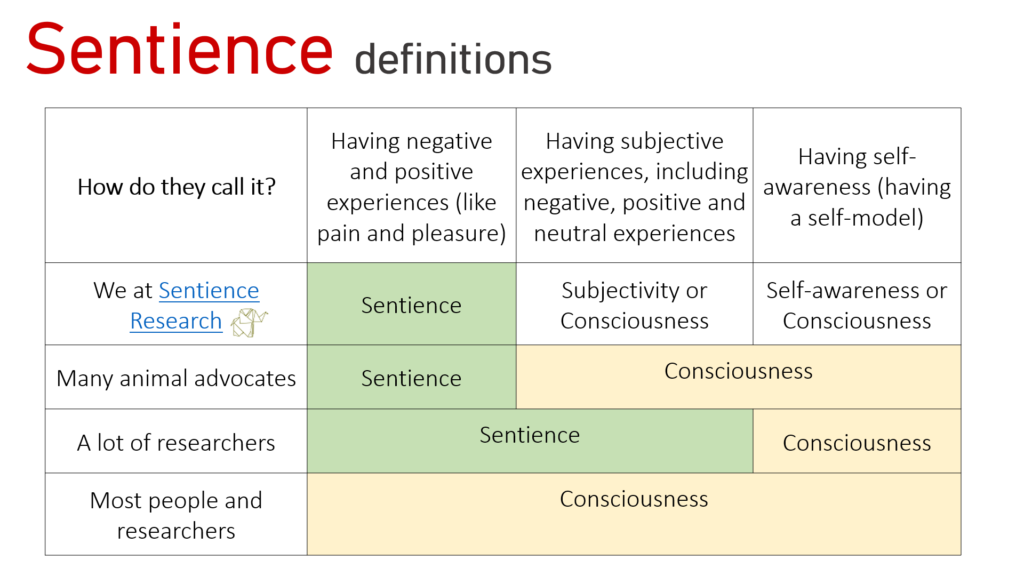Is like a wall! Is like a tree! Is like a snake! Is like a rope! (Blind men and the elephant)

Sentience is a relatively new (polysemic) word that is commonly used to refer to the ability to experience pleasure and / or pain. Very little is known about the mechanisms that produce it and where it comes from. This is probably one of the reasons why many ethical dilemmas remain unresolved. Investigating sentience in animals, machines and other potential subjects is important because it could help us avoid ethical catastrophes.
Also, to solve transcendental issues such as the pursuit of happiness, the future of humanity, immortality and the huge range of options offered by transhumanism, it is essential to deepen our knowledge about consciousness. The investigation of sentience, which is part of the spectrum of consciousness, will contribute to this task.
Consciousness is exciting intellectually, but sentience is what is morally relevant.
We use a definition of “sentience” that refers to subjective experiences that can be positive or negative, such as pleasure and pain, or enjoyment and suffering, and we leave out of the definition those experiences that are indifferent. That is why we say that sentience focuses on what is morally relevant.
Sentience Research‘s main objective is to reduce involuntary and useless suffering. For this it is necessary to expand our knowledge about where sentience comes from, and to reduce uncertainty about which beings do feel and how much they feel. This would allow us to be much more effective at reducing as much involuntary and useless suffering as possible. For this, we have the next instrumental objectives:
- Collect information and structure knowledge in the field of study of sentience as a phenomenon, and spread it to make it accessible.
- Study hypotheses about the nature of sentience, represent them in the form of models and test the coherence of these models. This could even allow us to refute some hypotheses or cause their redefinition.
- Investigate models for discovering the most effective ways to reduce suffering, assessing neglectedness, impact, cost and probability of success of each initiative.
- Monitor our activities to ensure their alignment with the reduction of suffering.
Go to “About” section to read more about us.
Photo credits: tarungupta.

Recent Comments